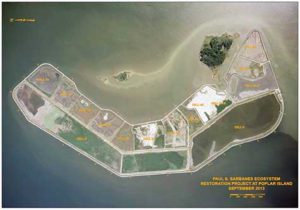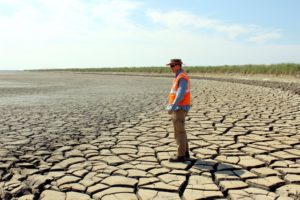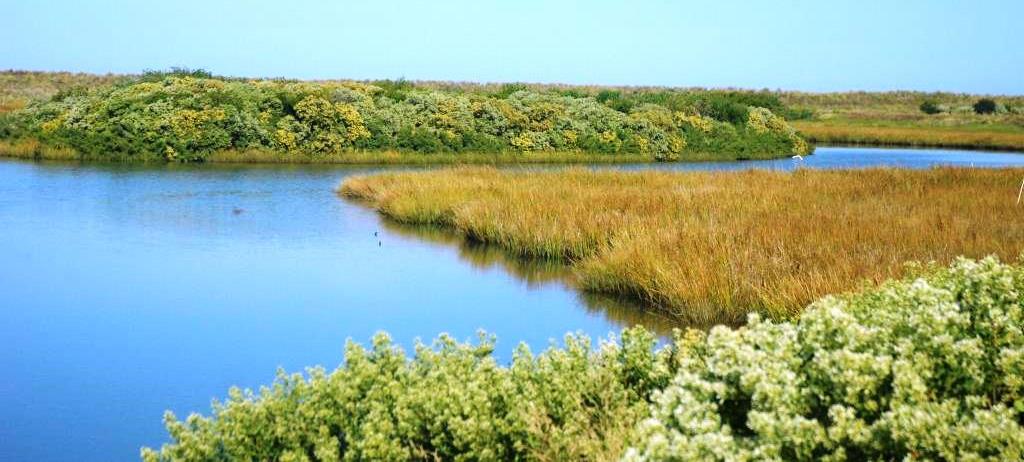As Ocean City, New Jersey works to clear its silted back bay lagoons, the question of what to do with the material dredged from those lagoons has proven vexing, at best.
The city has spent millions in recent years to keep the lagoons clear for boats. But city officials say the toughest part of that ongoing work is finding places to put the muddy material dredged out of the waterways, often referred to as dredge spoils.
Now the city is looking at a new plan to use some of the material to rebuild one of the marshy islands between the barrier island and the mainland. “The city is pursuing parallel paths for the beneficial reuse of dredged materials,” City Administrator James Mallon told the City Council. “This resolution put the city in a position to begin to rebuild wetlands in the bay, specifically Shooting Island, the side of which has been reduced by erosion.”
They are drawing inspiration from Poplar Island in the Chesapeake Bay, which has been restored via the beneficial reuse of dredged materials over the past two decades. REVITALIZATION publisher Storm Cunningham has been telling that ongoing story in many of his lectures and workshops over the past 15 years.
 Poplar Island, located in Talbot County, Maryland in the mid–Chesapeake Bay, has become a national model of environmental restoration. It is the site where an innovative solution for dredged material management is resulting in the restoration of a once vanishing island.
Poplar Island, located in Talbot County, Maryland in the mid–Chesapeake Bay, has become a national model of environmental restoration. It is the site where an innovative solution for dredged material management is resulting in the restoration of a once vanishing island.
Poplar Island is one of what was once many isolated islands within the Chesapeake Bay region. Through various natural processes, these islands are being lost. The habitat offered by these remote islands has historically offered safe, relatively predator free habitat to many of the Bay’s diverse wildlife and bird species, as well as a safe harbor for the Bay’s fish and shellfish resources.
Poplar Island was reduced in size from approximately 1,100 acres, as recorded in 1847, to just 5 acres in 1993. The loss of the island and its critical wildlife habitat has been reversed using clean dredged material from the Port of Baltimore’s approach channels. The process involves placing, shaping, and planting some 40 million cubic yards of dredged material within a dike constructed to approximate the 1847 footprint.
The first two phases of dike construction were completed by 2002, and dredged material placement began in 2001. In 2014, the project was authorized for a 575 acre expansion which is scheduled to begin as early as 2016 and will increase the total project size to 1,715 acres, allowing for a project placement total of 68 million cubic yards of material.
The restoration of Poplar Island includes the creation of uplands and intertidal wetlands offering a diversity of habitats for a variety of Chesapeake Bay wildlife. With less than 20% of the habitat creation completed, Poplar Island wildlife goals are already being realized. A number of the region’s most sensitive bird species including common and least terns, cattle and snowy egrets, osprey, and the American black duck, are found nesting onsite annually and diamondback terrapins continue to return to the site to nest as well.

Poplar Island after dredged materials added, but before ecological restoration. Photo courtesy of U.S. Army Corps of Engineers.
The restoration of Poplar Island has gained national and local attention, and Maryland and the U.S. Army Corps of Engineers won a “Coastal America” award for their work. The project also has gained international attention with delegations from across the globe visiting the site each year.
City officials recently took a tour of Poplar Island. The recently-restored areas were still barren and muddy, but the areas that had been restored and replanted were lush with growth.
“We were there when the monarch butterflies were migrating. It was really neat to see,” Ocean City spokesman Doug Bergen said.
Mallon said the proposed project could have other benefits, in addition to finding a new way to dispose of dredged material and rebuilding habitat.
“The rebuilding of the island and healthy wetlands on the island are not only important ecological features but also important for storms,” Mallon continued.
Many naturalists say healthy marshes help reduce flooding and can mean less damage from floods by dissipating the energy or waves during severe storms.
“In partnership with the Division of Fish and Wildlife, the city will work to reestablish healthy wetlands on this island,” Mallon concluded. “This type of program has been incredibly successful in other parts of the country.”
Featured photo of Poplar Island restored areas courtesy of University of Maryland Center for Environmental Sciences (UMCES).
See article by Bill Barlow in the Cape May County Herald.

